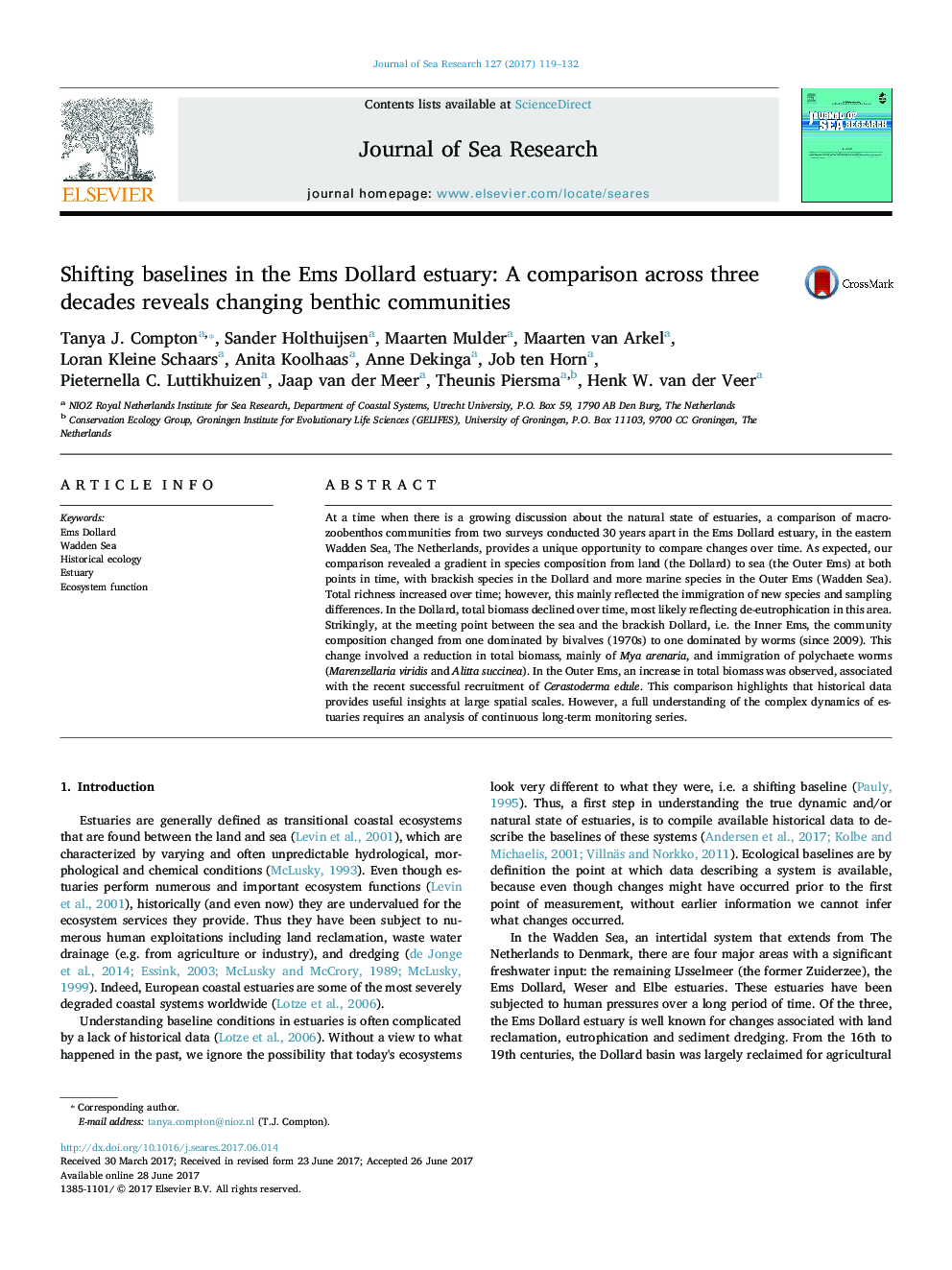| Article ID | Journal | Published Year | Pages | File Type |
|---|---|---|---|---|
| 5766097 | Journal of Sea Research | 2017 | 14 Pages |
â¢An ecological state change appears to have occurred in the Ems Dollard estuary.â¢Total biomass has declined in the Inner Ems and Dollard.â¢In the Inner Ems, the community has changed from bivalve to polychaete worm dominated.â¢Changes are probably due to the de-eutrophication and/or increased sedimentation.
At a time when there is a growing discussion about the natural state of estuaries, a comparison of macrozoobenthos communities from two surveys conducted 30Â years apart in the Ems Dollard estuary, in the eastern Wadden Sea, The Netherlands, provides a unique opportunity to compare changes over time. As expected, our comparison revealed a gradient in species composition from land (the Dollard) to sea (the Outer Ems) at both points in time, with brackish species in the Dollard and more marine species in the Outer Ems (Wadden Sea). Total richness increased over time; however, this mainly reflected the immigration of new species and sampling differences. In the Dollard, total biomass declined over time, most likely reflecting de-eutrophication in this area. Strikingly, at the meeting point between the sea and the brackish Dollard, i.e. the Inner Ems, the community composition changed from one dominated by bivalves (1970s) to one dominated by worms (since 2009). This change involved a reduction in total biomass, mainly of Mya arenaria, and immigration of polychaete worms (Marenzellaria viridis and Alitta succinea). In the Outer Ems, an increase in total biomass was observed, associated with the recent successful recruitment of Cerastoderma edule. This comparison highlights that historical data provides useful insights at large spatial scales. However, a full understanding of the complex dynamics of estuaries requires an analysis of continuous long-term monitoring series.
